Click on the exhibit.
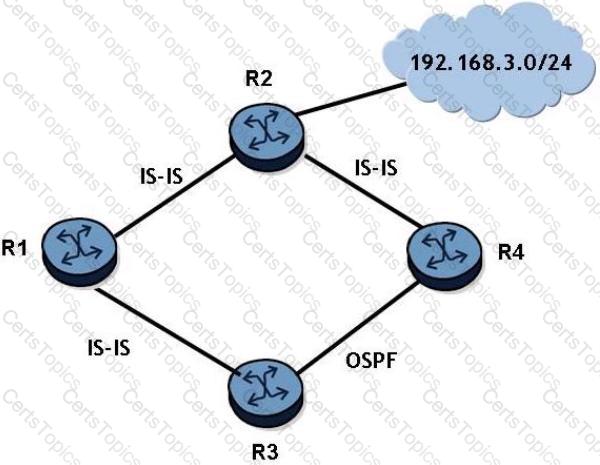
Router R2 has a directly connected interface to network 192.168.3.0/24 that is included in IS-IS.
If router R4 redistributes the IS-IS route to 192.168.3.0/24 into OSPF, router R3 will receive two routes to 192.168.3.0/24. Assume that all IS-IS routers are L1/L2 capable and are in the same area.
Which of the following is TRUE?
If the OSPF reference bandwidth is set to 1000 Gbps. what is the cost of a 1 Gbps interface?
Which of the following describes the purpose of 6over4 tunneling?
Click on the exhibit.
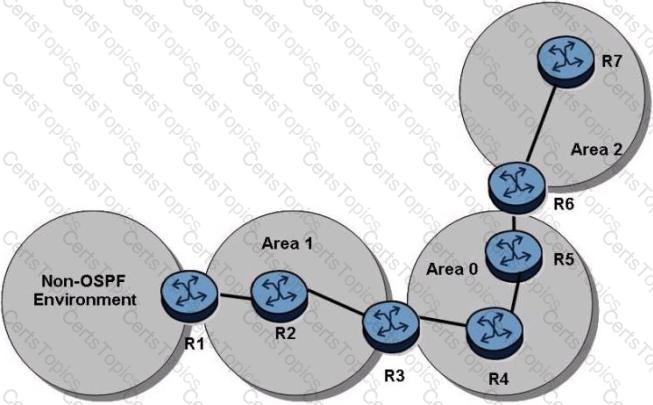
In the topology shown, router R1 is an ASBR configured to export external routes to OSPF. Assuming that there are no stub networks, which of the following statements regarding Type 5 LSA generation is TRUE?
An OSPF backbone area contains Type 5 LSAs. If an attached area receives only Summary LSAs from the backbone area, what type of area is the attached area?
Click on the exhibit.
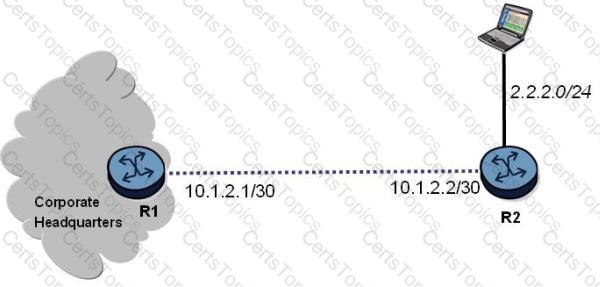
What is the correct command to configure a default route on the Alcatel-Lucent 7750SR R2?
How is the DR selected when an OSPF router is added to a broadcast network?
Click on the exhibit.
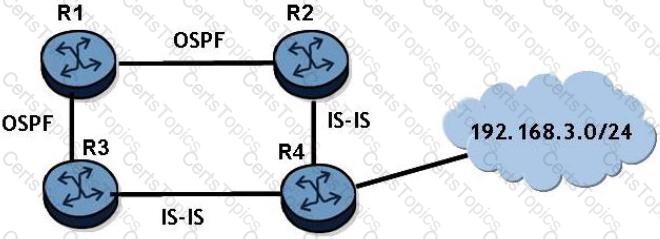
If router R2 re-distributes the IS-IS route 192.168.3.0/24 into OSPF, router R3 will receive two routes to 192.168.3.0/24 Assume that all IS-IS routers are L1/L2 capable and are in the same area.
What will be the preference of the two routes?
Which of the following best describes the features of Classless Inter-Domain Routing (CIDR)?
Choose the Distance Vector Protocols from the list below:
What command allows analysis of the Dijkstra calculation on the Alcatel-Lucent 7750 SR?
What are the ways the RID can be created on an Alcatel-Lucent 7750 SR router? (Choose three)
What is the default preference value for a static route in the Alcatel-Lucent 7750 SR router?
A static route is created using the command "static-route 0.0.0.0/0 next-hop 3.3.3.1". What command could be used to test the static route on an Alcatel-Lucent 7750 SR?
What command could be used to verify proper configuration of a static route in an Alcatel-Lucent 7750 SR router?
Exhibit
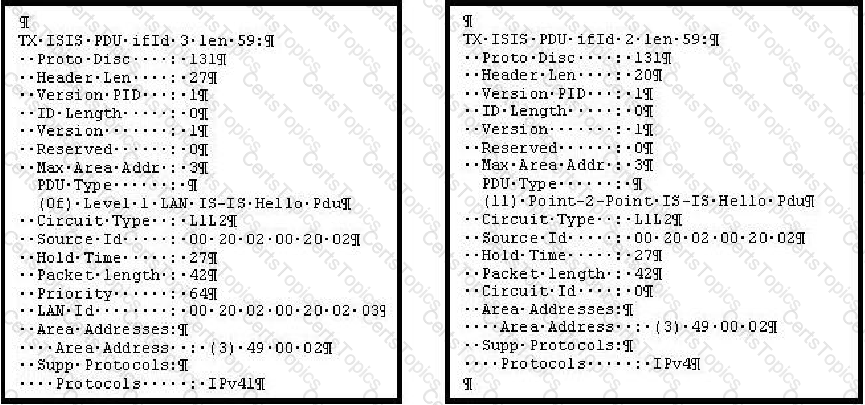
The following IS-IS packets have been exchanged between 2 adjacent IS-IS routers. What type of adjacency will be formed?
From the list below select the statements that describe the behavior of link state information aging. (Choose 2)
What is the source IP address in an OSPF update?
In an IP datagram, which field identifies the receiving application
What causes an adjacency to change from down to two ways?
Click the exhibit button.
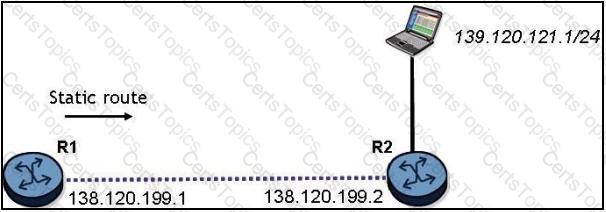
What is the command to configure a static route on the Alcatel-Lucent 7750 SR router R1 to reach the network behind router R2?
Which of the following is an optional parameter when configuring IS-IS protocol on a router?
Click the exhibit button.
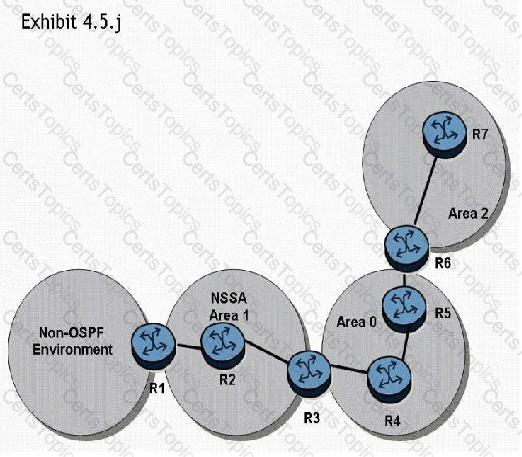
In the topology shown, router R1 is an ASBR configured to export external routes to OSPF. Which of the following statements regarding the OSPF LSAs in the network is true?
Click the exhibit button.
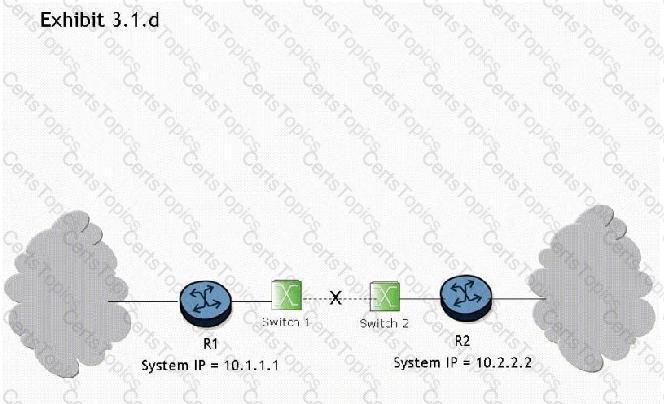
What triggers convergence of the routing protocol when the link between switch 1 and switch 2 goes down?
Which of the following statements best describes an OSPF type 3 LSA?
Click the exhibit button.
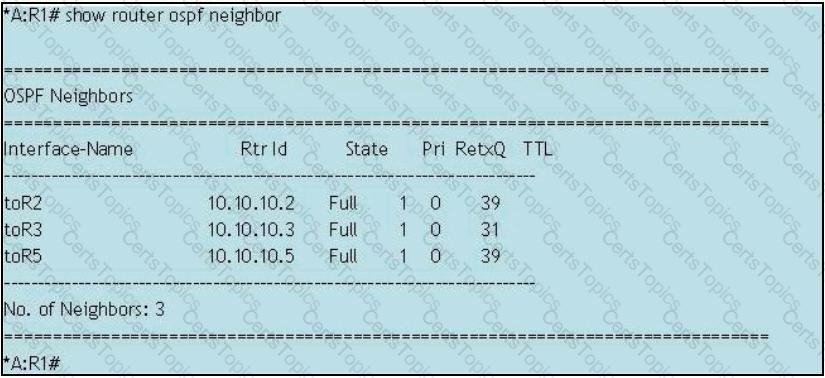
The following command sequence is executed on router R2:
On router R1, what router ID appears for router R2 directly after these commands are executed?
In an IP datagram, which of the following fields identifies the receiving application?
In an OSPF Hello packet, which of the following fields must match for all neighbor routers on the segment? Choose three answers.
Which of the following statements regarding the IS-IS CSNP is false?
Which three IS-IS PDU types are used for database synchronization?
Which of the statements below best describes the operation of the IPv6 anycast address?
Which part of the NSAP address is used to indicate to the end system that a packet is to be processed by the router itself?
Refer to the exhibit.
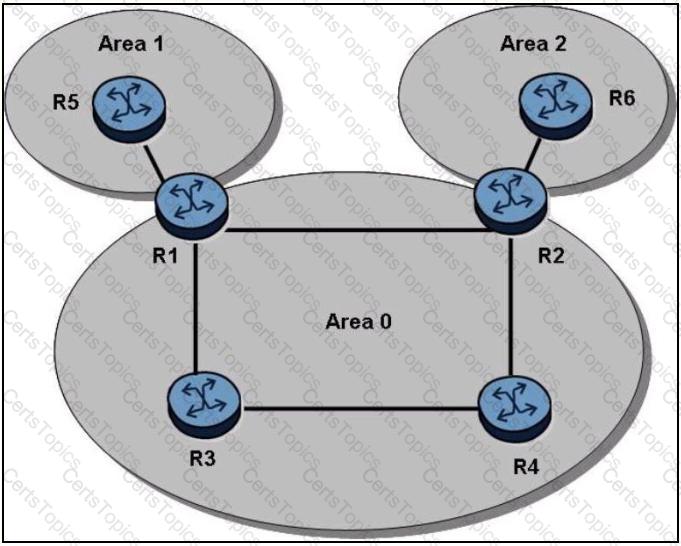
Assume that OSPFv3 is properly configured on all routers and that R4 advertises its system prefix into Area 0. Which of the following statements best describes how R5 learns R4's IPv6 system prefix?
A router receives an OSPF database description packet from a neighbor that references an LSA, which is already in the router's LSDB. The sequence number in the DBD packet is lower than the sequence number of the LSA in the LSDB.
What action does the router take?
Click the exhibit button.

Router R2 advertises the network 192.168.3.0/24 to router R1 via RIP.
How can router R1 ensure that it discards the route?
Refer to the exhibit below.
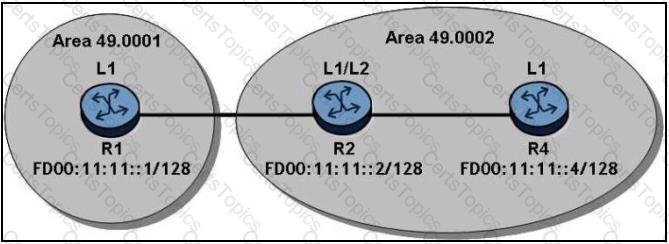
R1 distributes its loopbacks into IS-IS and globally routed addresses are configured as shown. How many routes will R4 have in its IPv6 route table?
Which of the following LSA types stay within an OSPF area, and are not flooded outside of the area? Choose two answers.
If routers R1 and R2 have a Level 1 and Level 2 IS-IS adjacency, which of the following statements are true? Choose two answers.
Click the exhibit button.
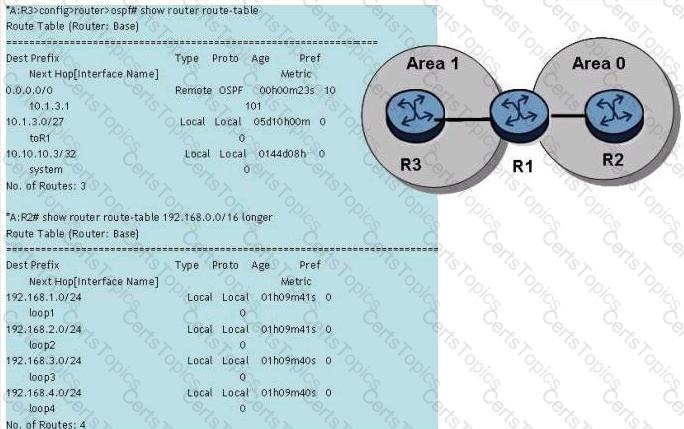
Given the topology and the route-tables shown, which of the following is most likely to be the configuration on router R1?
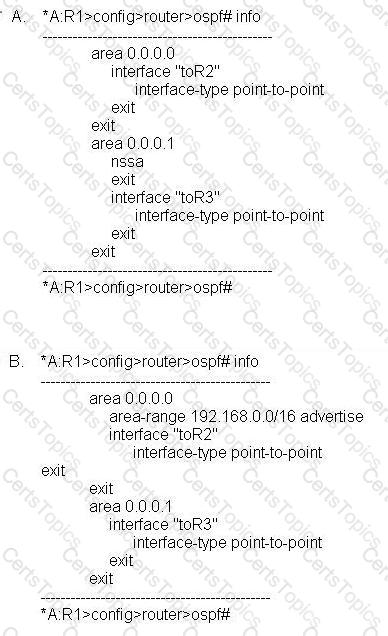
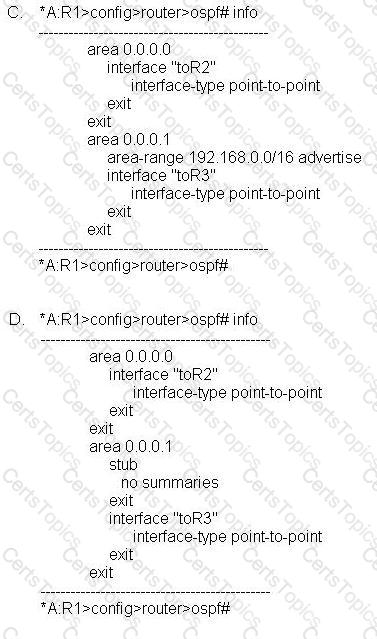
An Alcatel - Lucent 7750 SR receives a route from an IS-IS LSP with internal reachability, and receives the same route from an OSPF Type 5 LSA. If all protocol preferences are default, which route will be installed in the route table?
Which of the following about IS-IS level hierarchies is FALSE?
Which of the following best describes the actions taken by an IS-IS router after it receives an LSP on a broadcast interface that is newer than the one in its database?
Click on the exhibit.
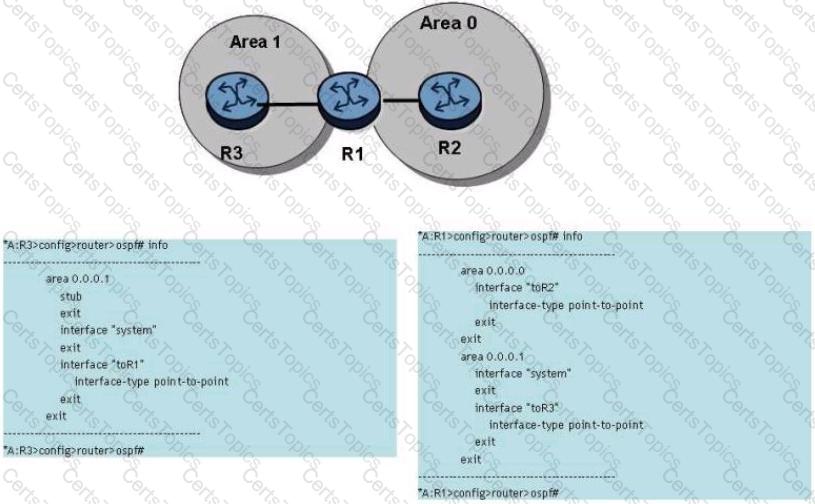
The OSPF adjacency between routers R1 and R3 does not come up.
Which of the following is a possible solution to the problem?
Click on the exhibit.
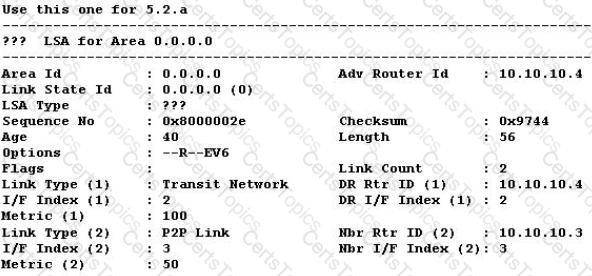
What type of OSPFv3 LSA is shown?
Click on the exhibit.
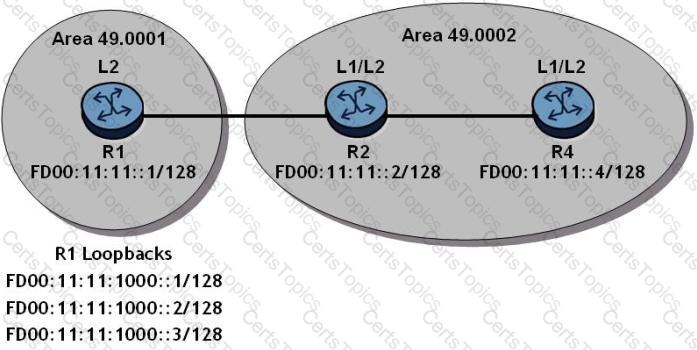
Router R1 distributes its globally routed address and its loopbacks into IS-IS. Routers R2 and R4 have their globally routed addresses in IS-IS.
How many routes will router R4 have in its IPv6 route table?
Which field of an IPv6 header indicates an upper layer protocol carried in the packet?